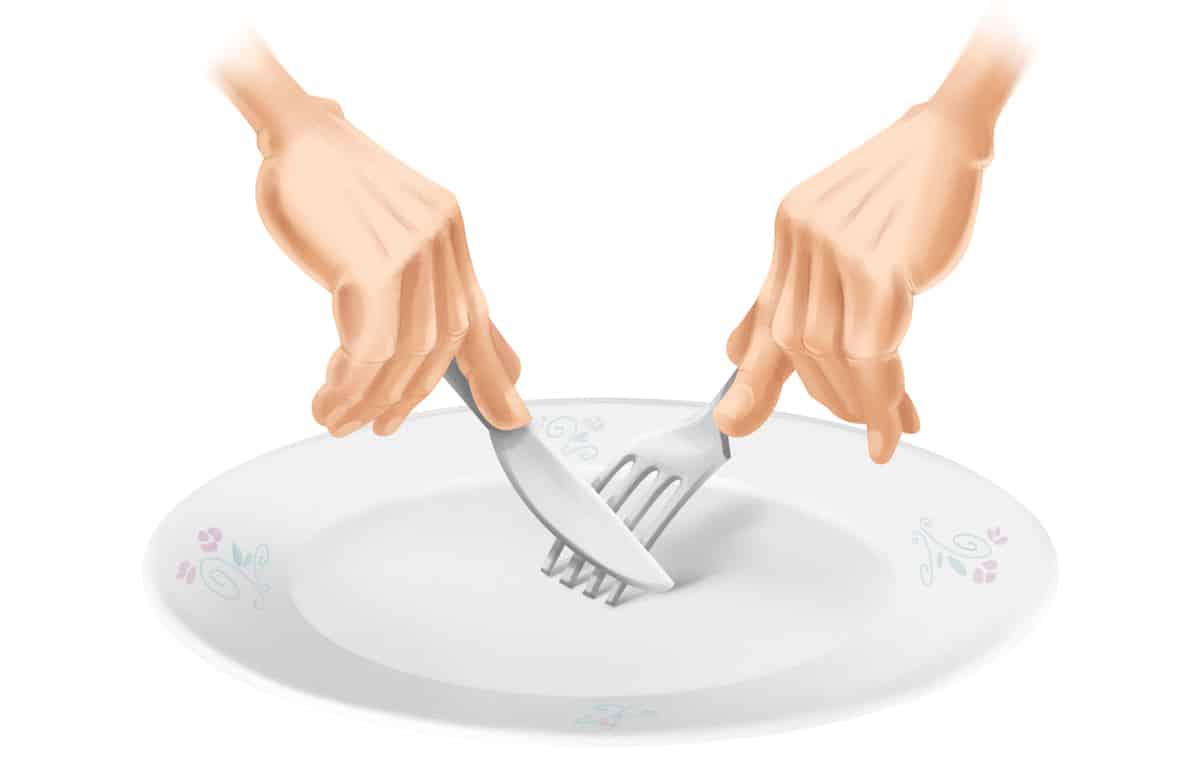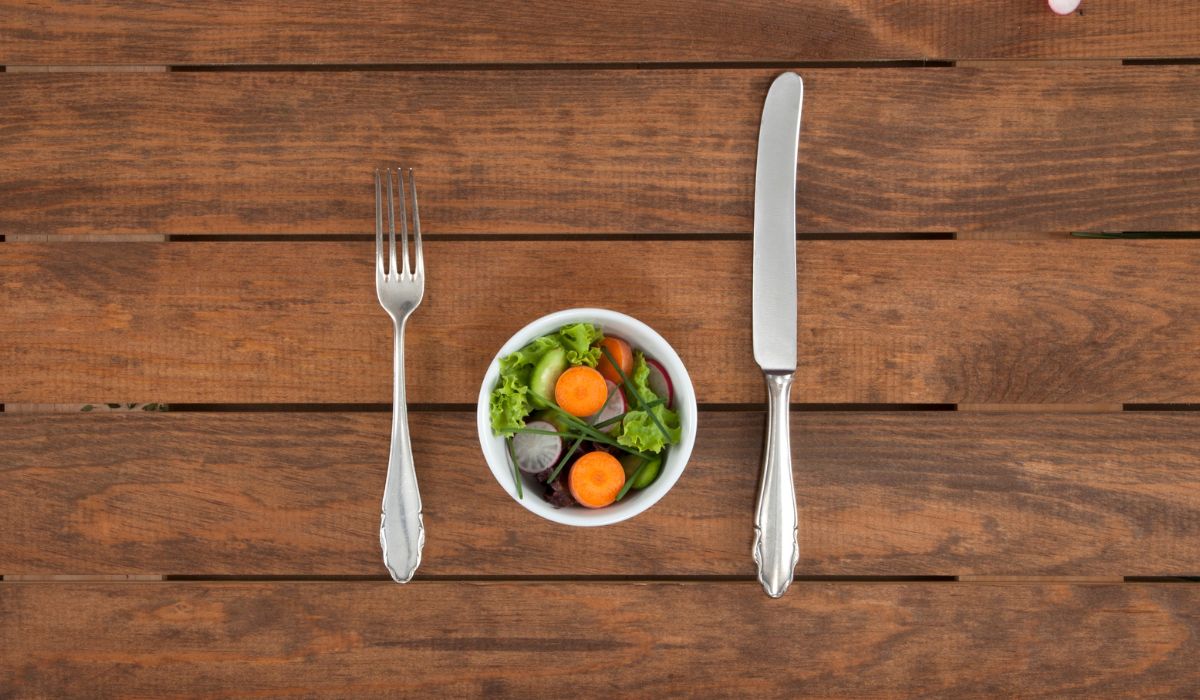Humans don't eat logically. We don't sit down to a meal, consciously decide how much food will meet our nutritional needs, eat that much, and then stop. We do make subconscious and quasi-conscious decisions about how much to eat based on...
- Who we’re eating with. For example, women eat less when they’re eating with a man, compared to eating with other women.
- The weight of the waiter who served us our food.
- Whether or not we're distracted (e.g. eating in front of the TV)
- How full we expect to be at the end of the meal.
- How healthy we think the food is. (this can overlap with how full we expect to be, because research also shows that people expect “healthy” foods to be less filling, and so they eat more of them)
Sure, we can try to count calories and regulate our diet based on that, but we're almost universally horrible at estimating the number of calories we eat. Just for example, when we see multiple foods on the same plate, we tend to guesstimate the number of calories based primarily on the volume of food, without accounting for differences in calorie density.
The “solution” is to go through all the laborious work of weighing and measuring and counting, but our brains just aren’t built to operate that way. And unless you've been part of a metabolic ward study, you have no idea what your particular energy needs actually are, anyway - population averages based on height and weight could be totally off.
One of the oldest tricks in the book for getting around this is to simply use smaller plates, cups, and bowls. If you use a smaller plate, the same amount of food looks bigger, so you're basically tricking your brain into feeling fuller with less total food, without having to do all that hard (and realistically speaking, unsustainable) cognitive work of counting calories. Great! But does it really work?
Do Smaller Serving Vessels Really Work?

A Cochrane review found overall moderate-quality evidence supporting a reduction in serving vessel size. The researchers estimated that if an average adult living in the UK switched to smaller serving plates and bowls, she would significantly reduce her energy intake.
How much “smaller” is “smaller”? Here’s where the math comes in and the percentages get complicated. Most of the studies used a “normal” plate size and a “big” plate size, and specified how much they increased “normal” to get “big.” Most of the studies used one of two increases:
- Small increase: something between 120 and 159% of “normal” (on average increased energy intake by 7.7%)
- Big increase: precisely 200% of “normal.” (on average increased energy intake by 15.6%)
But most people aren’t interested in increasing their servings. Most people want to go the opposite direction. So here’s a handy conversion chart to do that backwards: assuming your current plates are “big,” how much would you have to reduce to get to “small” and get the energy reductions in the study?
(This is using the average data from the Cochrane review only; if you look up any one individual study, the results could vary significantly).
For reference, 12 inches is a typical American dinner plate. 8-9 inches in diameter is pretty typical for a children’s plate (as in, the ones you can get covered in ladybugs and cute cartoon characters and construction vehicles and stuff). If you’re not huge on the cartoon-animal melamine aesthetic, perfectly grown-up salad plates sometimes go as small as 7”.
A Few Caveats
The researchers noted some interesting trends and patterns that should give you pause for thought if you’re thinking of trying this. If you dig into the details of the study (it’s free full-text, so anyone can read it) you’ll find that…
Effect sizes were larger with less nutrient-dense foods. This is actually really telling, because it hints at the problem of self-regulation with hyperpalatable modern junk foods. If people are more susceptible to external portion size cues with junk food than with nutrient-dense foods, it could be because these foods are actually designed to suppress our natural “stop eating” cues, so we need some outside help in determining how much to eat.
More relevantly, it also suggests that the effect sizes may be smaller if you’re eating Paleo already. So if you’re switching from big-plate Paleo to small-plate Paleo, the benefit could be significantly less than you’d expect from the table above.
Effect sizes were larger when all the food in the study was manipulated. So you’d want to change all your serving dishes, not just change (for example) your dinner plates and leave your soup bowls alone.
Adults were more susceptible than children. That makes sense: by the time most of us reach adulthood, we’ve had years of trying to override our body’s hunger and fullness cues in various ways, and years of exposure to advertising and other factors that try to do it for us.
The Big “But” About This Study
But all those things are minor quibbles, compared to the huge catch buried down in the full text of this study. Here it is, straight from the horse’s mouth:
it is important to highlight that these findings were derived from studies that typically investigated exposures that were one-off, or if repeated at all, were repeated over relatively short time periods, often under highly controlled experimental conditions. The longer-term sustainability of the effects of prolonged or repeated exposures, and effects under free-living conditions, therefore remain to be established.
So in other words, they have no idea how well this works in actual humans living in the real world for long periods of time. It might work for the first week and then become completely ineffective, and you’d be out the cost of a second set of dinner plates for no reason.
They also have no idea whether it works if you try doing it to yourself, instead of having a researcher do it to you. Remember from above that a lot of human eating behavior is based on expected fullness, not actual physical signals of fullness from our digestive system. It’s possible that knowing that you’re using a smaller plate in an attempt to eat less could completely cancel out the effect, and you’d just end up piling the food higher to compensate, or still feeling hungry at the end of the meal (which is what you were trying to avoid in the first place).
So Does it Work?
In the most important sense of the question - does it work for actual free-living humans - we just don’t know. It might be really great in a lab, but you don’t care what works in a lab if it doesn’t work in real life.

If you can afford new dinner plates, or if you have smaller plates lying around, it’s certainly worth a try and it probably couldn’t hurt anything. But just bear in mind the limitations of the evidence we have: we don’t know whether or not it works in the real world, and even if it does, the effect size for people already eating healthy food could be quite small.





Leave a Reply